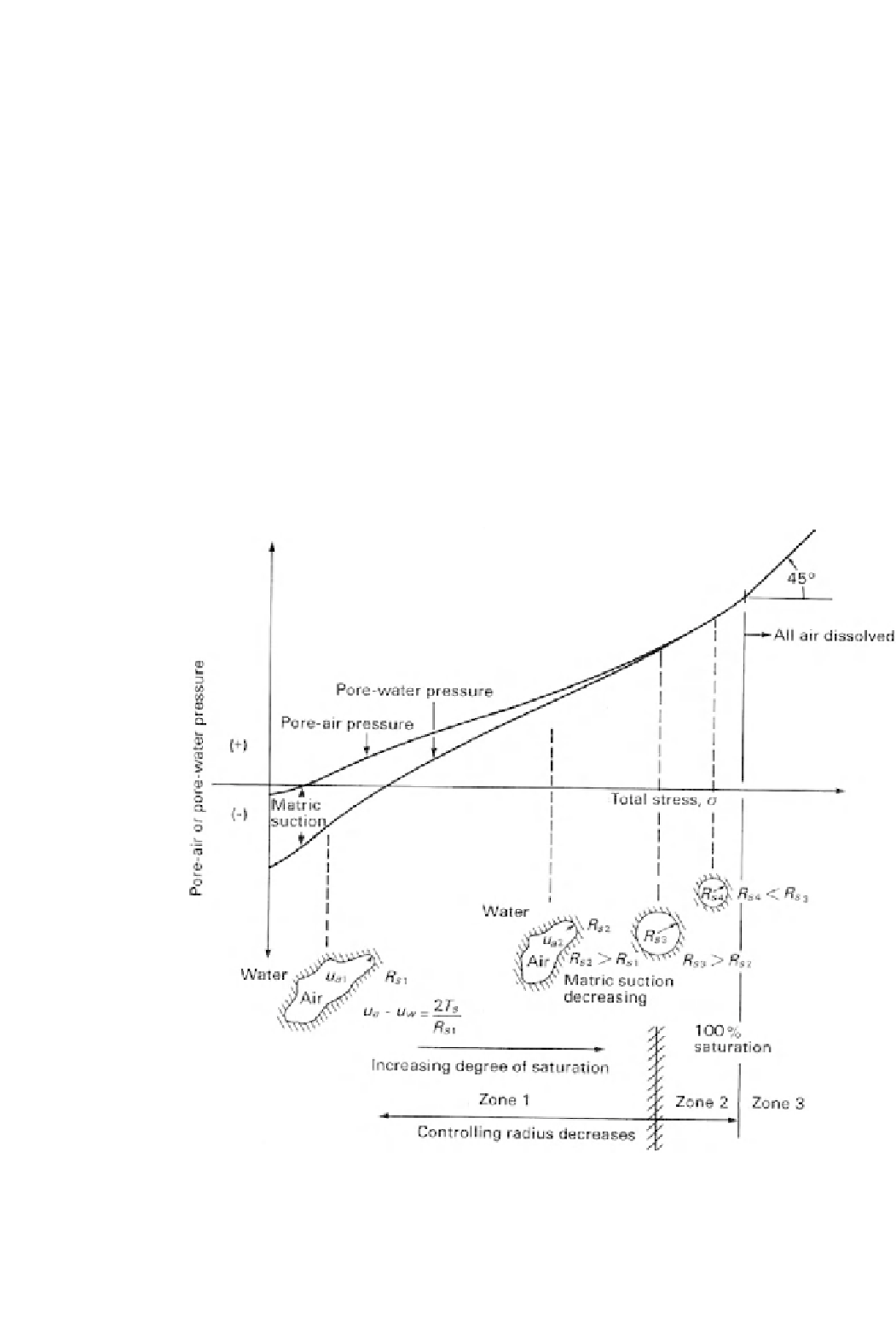Environmental Engineering Reference
In-Depth Information
radius of curvature of an air bubble,
R
s
,
becoming a vari-
able in the compressibility equation. However, the radius
R
s
is not measurable and adds no value in solving practical
engineering problems.
The incorporation of the radius of curvature suggests that
the difference between the pore-air and pore-water pres-
sures increases as the applied total stress is increased during
undrained compression. It has been postulated that there
exists a critical pore-water pressure beyond which all of the
free air would dissolve abruptly (i.e., bubble collapse). This
has become known as the air bubble collapse theory. Col-
lapse occurs when a critical pore-water pressure is reached.
This phenomenon should reflect an increase in compress-
ibility at the critical pore-water pressure.
The postulated bubble collapse theory suggests that there
is an increase in the difference between the pore-air and
pore-water pressures (i.e., matric suction) as total stress is
increased. However, there appears to be no experimental
evidence to support this postulate. On the contrary, experi-
mental evidence supports a continual, smooth increase of
the pore-air and pore-water pressures until the two fluid
pressures become equal as the soil approaches saturation.
This means that matric suction decreases with an increase in
total stress during undrained compression. There appears to
be some conceptual difficulties when the capillary equation
is incorporated into the equation for the compressibility of
air-water mixtures.
The problems associated with incorporating the capillary
equation into the equation for pore fluid compressibility can
be better understood by considering the loading of an ele-
ment of unsaturated soil. Let us assume there are numerous
occluded air bubbles within the soil element, as shown in
Fig. 15.10. The capillary equation describes a microscopic
phenomenon within the element. The radii of the occluded
air bubbles are not measurable and exist at the microlevel.
It can be argued that the microcapillary equation should not
be incorporated into a macroscopic type of formulation for
compressibility.
It is possible to draw a parallel comparison between the
effective stress variable used at the macroscopic, continuum
mechanics level and intergranular stresses at the microscopic
level between the soil particles of a saturated soil. From a
microscopic point of view, there exist numerous intergran-
ular stresses acting at the contacts between soil particles.
Figure 15.10
Pore-air and pore-water pressure responses to change in total stress during
undrained compression.








Search WWH ::

Custom Search